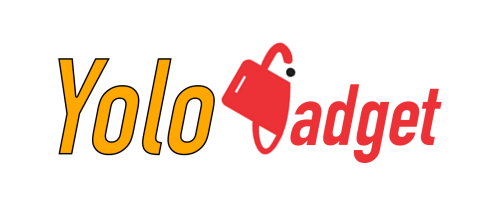Webinars are becoming increasingly popular in the business world, with many companies using them as a marketing tool to reach new audiences, educate their customers, and generate leads. In this blog post, we will discuss the best techniques for creating and presenting successful webinars.
-
Planning Your Webinar
Before you start creating your webinar, it’s important to have a clear plan in place. This involves understanding your audience, defining your goals and objectives, and selecting the appropriate date, time, and format for your webinar.
-
Understanding Your Audience and Their Needs
To create a successful webinar, you need to understand who your target audience is and what their needs and interests are. This involves researching your audience’s demographics, pain points, and interests, and using this information to tailor your content to their specific needs.
-
Defining Your Goals and Objectives
It’s important to define your goals and objectives before you start creating your webinar. This could be anything from generating leads and building brand awareness to educating your customers and establishing your thought leadership in your industry.
-
Choosing the Right Topic and Title
The topic and title of your webinar are critical in attracting your target audience. It should be relevant to your audience’s needs and interests and should be presented in a way that is attention-grabbing and memorable.
-
Selecting the Appropriate Date and Time
When selecting a date and time for your webinar, it’s important to consider your target audience’s schedule and time zones. Choose a time that is convenient for your audience and maximizes attendance.
-
Determining the Length and Format of Your Webinar
The length and format of your webinar will depend on your goals and objectives and the attention span of your target audience. Generally, webinars should be no longer than an hour, including Q&A sessions.
-
Deciding on the Type of Webinar Software to Use
There are many webinar software options available, including Zoom, GoToWebinar, and Adobe Connect. Choose a software that is user-friendly, reliable, and has the features you need.
2. Designing Your Webinar Content
Once you have planned your webinar, it’s time to start designing your content. This involves creating a structured outline for your webinar, developing an engaging and interactive presentation, using multimedia content, incorporating real-life examples and case studies, including a Q&A session, and making your content visually appealing.
-
Creating a Structured Outline for Your Webinar
A structured outline will help you stay organized and ensure that your content is well-planned and flows smoothly. It should include an introduction, main points, and a conclusion, as well as time for Q&A.
-
Developing an Engaging and Interactive Presentation
To keep your audience engaged, you need to create an interactive presentation that includes visuals, multimedia, and real-life examples. This will help keep your audience engaged and interested in your content.
Using Multimedia Content Incorporating multimedia content such as images, videos, and polls can help break up your presentation and keep your audience engaged.
-
Incorporating Real-Life Examples and Case Studies
Real-life examples and case studies can help illustrate your points and make your content more relatable to your audience.
-
Including a Q&A Session
Including a Q&A session is a great way to engage your audience and answer any questions they may have about your topic.
-
Making Your Content Visually Appealing
Making your content visually appealing is key to keeping your audience engaged. Use visually appealing graphics, typography, and color schemes to make your presentation look professional and polished.
3. Promoting Your Webinar
Promoting your webinar is critical to its success. This involves creating an effective landing page, utilizing email marketing, leveraging social media, partnering with other organizations, offering incentives, and creating a sense of urgency.
-
Creating an Effective Landing Page
Creating an effective landing page is critical in attracting your target audience. Your landing page should include a clear and concise description of your webinar, the date and time, and a call-to-action (CTA) button that allows visitors to register for the event.
-
Utilizing Email Marketing
Email marketing is an effective way to promote your webinar and reach your target audience. Send personalized invitations and reminders to your email list, and include information about the event in your email signature.
-
Leveraging Social Media
Social media is a powerful tool for promoting your webinar and reaching a wider audience. Use hashtags and post updates on your social media accounts to generate buzz and attract attendees.
-
Partnering with Other Organizations
Partnering with other organizations can help you reach a wider audience and build credibility. Look for organizations that have a similar target audience and offer complementary services or products.
-
Offering Incentives
Offering incentives such as discounts, free resources, or access to exclusive content can help motivate people to register for your webinar.
-
Creating a Sense of Urgency
Creating a sense of urgency can help increase registrations and attendance for your webinar.
4. Presenting Your Webinar
When presenting your webinar, it’s important to be prepared, engaging, and interactive. This involves practicing your presentation, engaging your audience, using interactive tools, and following up with attendees.
-
Practicing Your Presentation
Practice your presentation multiple times to ensure that you are comfortable with the content and pacing. This will help you stay confident and focused during the live event.
-
Engaging Your Audience
Engaging your audience is critical in keeping them interested and attentive throughout the webinar. Use interactive tools such as polls, quizzes, and chat functions to encourage participation and feedback.
-
Using Interactive Tools
Interactive tools can help keep your audience engaged and make your webinar more interactive. Use tools such as whiteboards, polls, quizzes, and breakout rooms to encourage participation and collaboration.
-
Following Up with Attendees
Following up with attendees after the webinar is a great way to build relationships and gather feedback. Send a personalized thank-you email, offer resources or exclusive content, and ask for feedback or testimonials.
Conclusion
A webinar can reach new audiences, educate their customers, and generate leads for a webinar marketing agency and B2B marketing agency. To create a successful webinar, it’s important to plan your content, design your presentation, and promote the event effectively. By following the best practices outlined in this blog post, you can create and present a successful webinar that engages your audience and achieves your marketing goals.
FAQs
- What are the benefits of hosting a webinar?
Hosting a webinar allows B2B marketing agencies to reach new audiences, educate their customers, and generate leads.
- How long should a webinar be?
Webinars should be no longer than an hour, including Q&A sessions.
- What software can I use to host a webinar?
There are many webinar software options available, including Zoom, GoToWebinar, and Adobe Connect.
- How can I promote my webinar?
To promote your webinar, create an effective landing page, utilize email marketing, leverage social media, partner with other organizations, offer incentives, and create a sense of urgency.
- How can I keep my audience engaged during my webinar?
To keep your audience engaged during your webinar, create an interactive presentation, use multimedia content, incorporate real-life examples and case studies, include a Q&A session, and make your content visually appealing.

